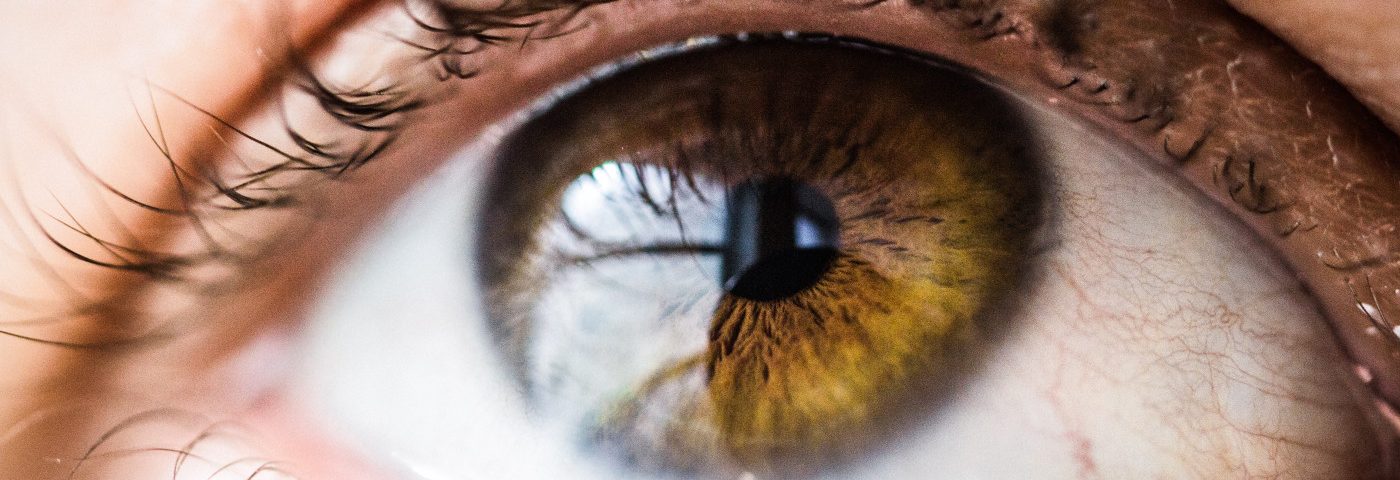The use of bandage contact lens to help heal corneal ulcers may lead to severe bacterial infection in people with neurotrophic keratitis (NK) associated with Meretoja’s syndrome, according to a case report.
Based on the findings, researchers recommended that bandage contact lens be avoided in Meretoja’s patients with NK.
The case study, “Contact lens induced bacterial keratitis in LCD II: Management and multimodal imaging: a case report and review of literature,” was published in the European Journal of Ophthalmology.
Neurotrophic keratitis is a rare degenerative eye disease that affects the nerves serving the cornea, the transparent protective outer layer of the eye that works like a window to control and focus the entry of light.
Damage to these nerve cell fibers leads to a loss of sensation in the cornea, lower tear production in response to stimuli, breakdown of the corneal epithelium (its outermost, protective layer), scarring, and impaired healing.
These lesions can evolve into a corneal ulcer, which can manifest as a thinning of the cornea and leave the eye more susceptible to infection. In more advanced stages, patients may develop a hole or opening to the inside of the eye, which eventually may lead to vision loss.
Several treatment options exist to promote the healing of corneal ulcers, such as artificial tears (including preservative-free eye drops), autologous (own) serum eye drops, and bandage contact lens — used to protect the damaged cornea from the natural friction of blinking eyelids.
A team of researchers at the Quinze-Vingts National Ophthalmology Hospital, in Paris, now have described the case of a severe cornea infection following the use of bandage contact lens for recurrent corneal ulcers in a 50-year-old woman with NK associated with Meretoja’s syndrome.
Meretoja’s syndrome, also known as lattice corneal dystrophy type 2, is a rare genetic disease characterized by an accumulation of toxic protein clumps called amyloid deposits in tissues throughout the body, mostly affecting the cornea, nerves, and skin.
In these patients, amyloid clumps in the cornea form a lattice pattern of delicate branching fibers and lead to repeated breakdown of the corneal epithelium. As the disease progresses, these clumps start to affect nerves throughout the body, including those that supply the cornea, leading to NK and even further corneal damage.
In the current case, the woman had been diagnosed with Meretoja’s syndrome at age 32 after presenting with recurrent eye discomfort at their center.
A battery of ophthalmologic exams showed the presence of a lattice pattern of amyloid clumps throughout the cornea, corneal epithelium abnormalities and scarring, and NK with loss of corneal sensation. It also revealed lower tear production in response to stimuli (a common symptom of both Meretoja and NK) and corneal neovascularization — the abnormal formation of blood vessels in the cornea that often occurs with chronic NK.
Since diagnosis, the patient started using preservative-free eye drops on a regular basis and autologous serum eyedrops (six times a day) in both eyes. She complained of intense eye irritations every three months due to epithelial breakdown and corneal ulcers, which were treated with preservative-free eye drops and antibiotic drops (levofloxacin).
After a new crisis, the woman went to another ophthalmology emergency center, where an ophthalmologist placed a bandage contact lens to relieve her discomfort and heal the corneal ulcer.
Two days later, the patient’s eye worsened and she went to Quinze-Vingts’ emergency unit with a left red eye, which was found to have impaired vision and a deep corneal ulcer with a severe infection.
Biological analysis revealed that the infection was caused by a bacterium called Pseudomonas aeruginosa and her immediate treatment with large-spectrum antibiotics was then adapted to the bacterium’s known sensitivity. She also was prescribed intensive preservative-free eye drops.
Both the infection and ulcer were reduced after one week of treatment, which was progressively decreased. Ten weeks after presentation, she showed deep corneal scarring with increased neovascularization, for which she was prescribed bevacizumab drops (5mg/ml) twice daily.
Bevacizumab was well-tolerated and after three months the woman showed partial regression of abnormal blood vessels in the cornea .
These findings highlighted that NK associated with Meretoja’s syndrome contributes to recurrent corneal breakdown and ulcers and that “the use of bandage contact lens should be avoided in Meretoja’s syndrome to prevent a possible [cornea infection],” the researchers wrote.
“Regular follow up by an ophthalmologist in cooperation with a multidisciplinary health care team is a fundamental element in the diagnosis and management of such multisystem disease,” they concluded.

